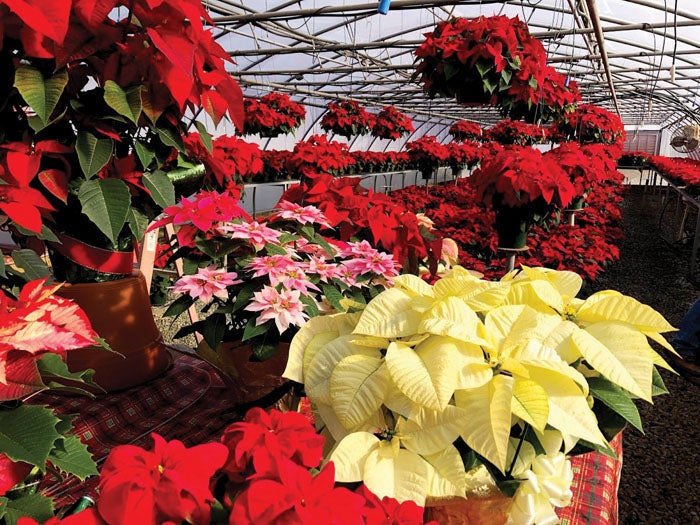Darrell Blackwelder: Can you keep poinsettias for the next Christmas season?
Published 12:00 am Sunday, December 27, 2020

- Keeping a poinsettia for the next Christmas season can be done, but it takes a dedicated gardener.
The Christmas holiday is here and many have questions concerning their poinsettia. One of the biggest questions is if poinsettias are poisonous. It’s a myth that’s been around since the early 1900s. When a small child in Hawaii ate a few leaves of a poinsettia and mysteriously died later, the plant was deemed a poisonous plant. Documented information during this period was sketchy at best but the myth still exists. Poinsettia bracts and foliage are not toxic; however these plants are ornamentals, intended for ornamental purposes only.
Another question is can you keep poinsettias for the next season? These plants can be over-wintered and used next year, but it can be a challenge. The colorful bracts generally fade in the spring. As they fade, prune them back to about 8 inches in height. The plant will look naked after pruning but will eventually new growth will emerge from the nodes along the stem. It’s important to place the plant in a sunny location and continue to water it regularly during while it’s growing.
It would be best to take the plant outdoors once the night temperature remains above 50 degrees at night. Fertilize the plant every two to three weeks during the spring, summer and fall with a well-balanced water soluble fertilizer.
In early June, transplant the poinsettia into a container 2 to 4 inches bigger than the original pot. Use a soil mix containing a considerable amount of organic matter, such as compost, leaf mold or peat moss. Pinch back the shoot tips or prune back the branches to keep the plant compact. Do not pinch back after Sept. 1. When night temperatures become cool — 55 to 60 degrees in September — bring the plant indoors to a sunny location.
Poinsettia plants will flower next year if you follow a few procedures. The poinsettia is a short-day plant, meaning it needs a continuous long dark period each night to form its colorful bracts. Starting the first week of October for the next 10 weeks, the plant must be kept in total darkness for 14 continuous hours each night. Keep the plant in darkness by moving it to a closet or covering it with a large box. It’s a much easier process to locate the plant in a room that never gets light at night. During this period, the plant must also receive six to eight hours of bright sunlight daily. Depending on the response time of the particular cultivar, the plant should into full bloom during November or December.
Keeping a poinsettia for next year’s Christmas season can be done, but it will take a dedicated gardener. Many enjoy the challenge while others stimulate the economy by purchasing new plants each year.
Darrell Blackwelder is the retired horticulture agent and director with the North Carolina Cooperative Extension Service in Rowan County. Contact him at deblackw@ncsu.edu .




